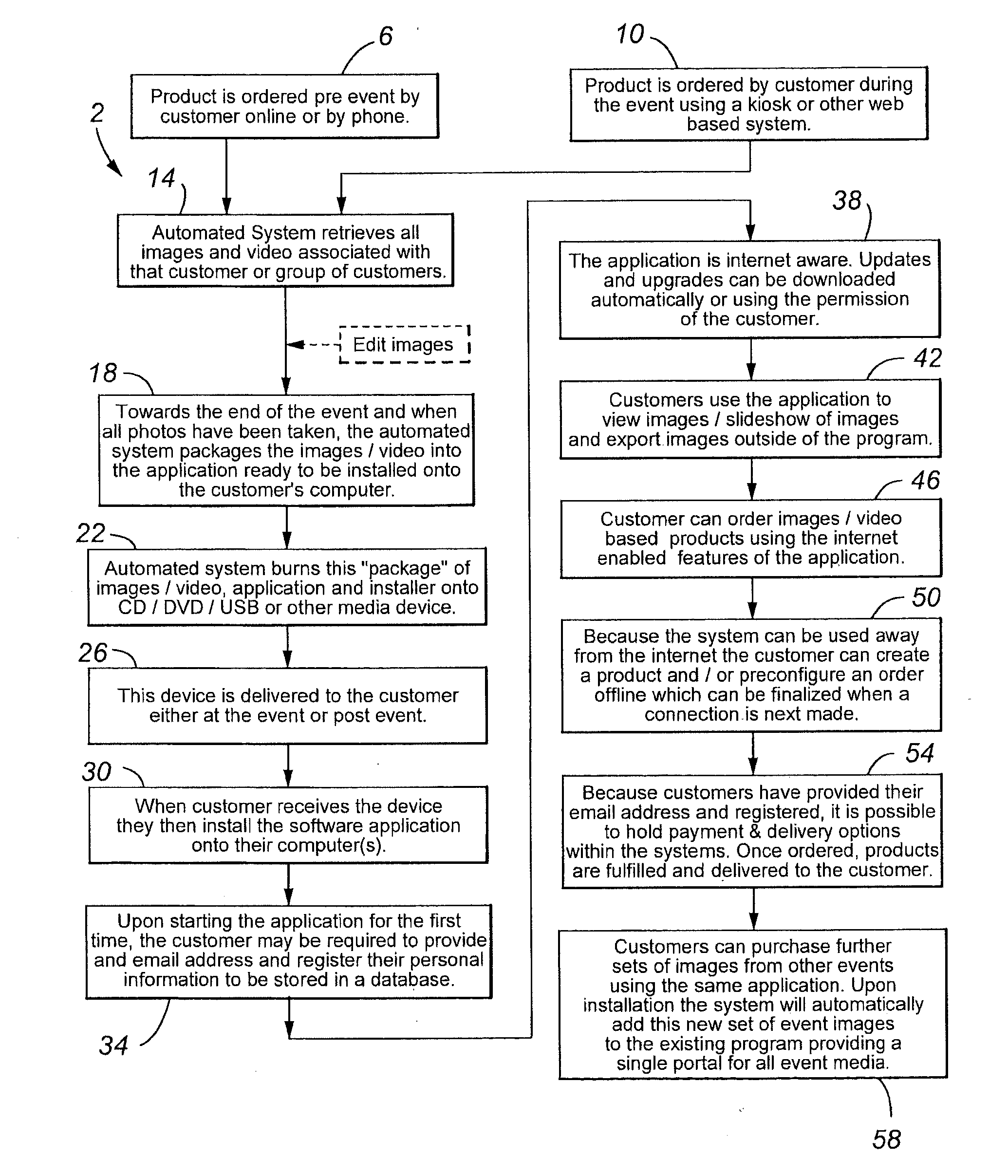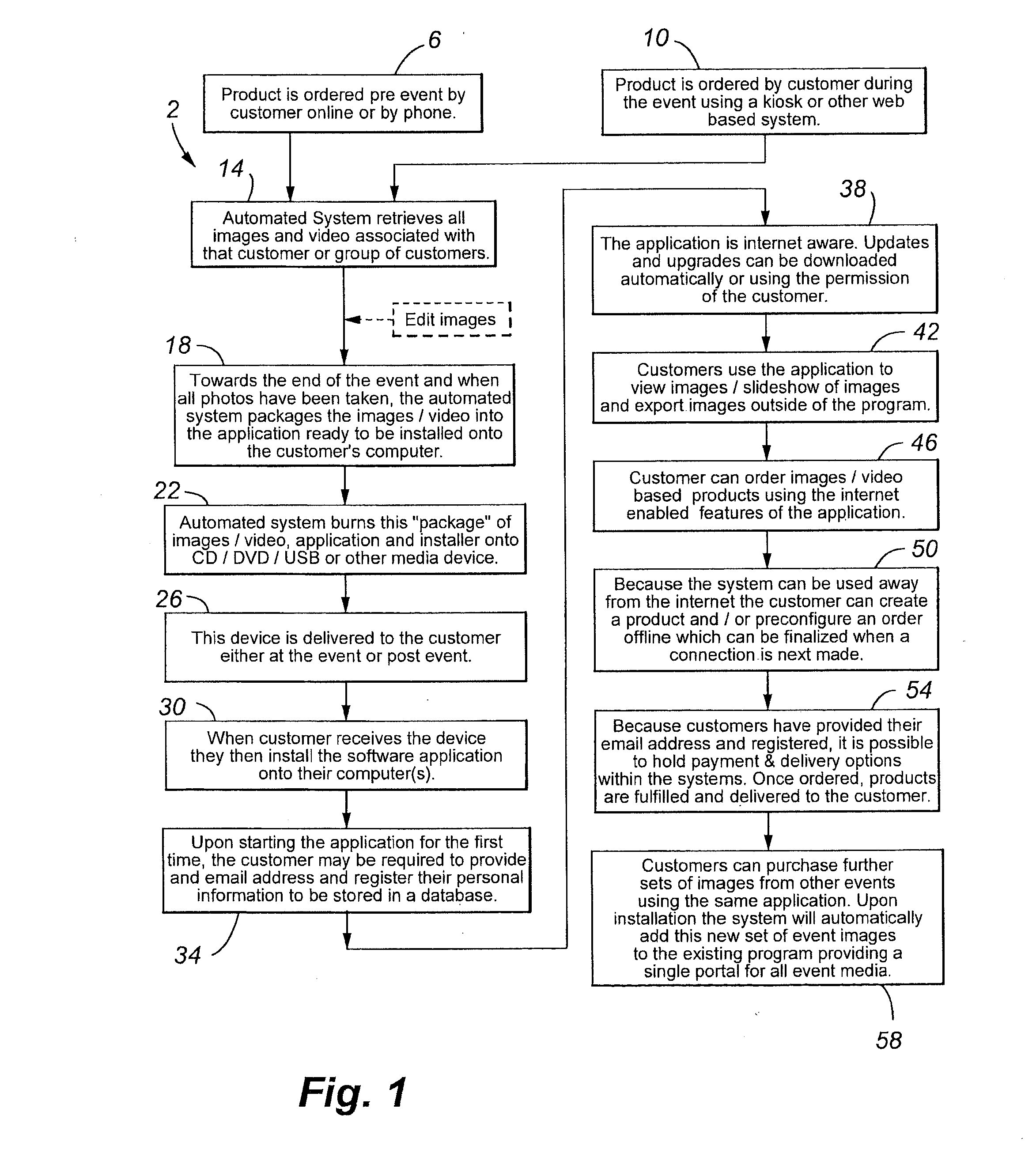Method and system of displaying, managing and selling images in an event photography environment
a technology of event photography and management system, applied in the direction of buying/selling/lease transactions, instruments, etc., can solve the problems of increasing the time and cost burden of providing, editing and displaying photos, wasteful and environmentally unsound, and its effectiveness, so as to simplify image design, relieve the task of the event holder, and enhance the effect of image review and editing
- Summary
- Abstract
- Description
- Claims
- Application Information
AI Technical Summary
Benefits of technology
Problems solved by technology
Method used
Image
Examples
Embodiment Construction
[0042]FIG. 1 shows a workflow associated with a digital image system 2 of one embodiment of the present invention. Here, images are ordered by the guest pre-event 6, either on-line, by phone, by mail or by other means. It is contemplated that the guest would be aware of the ability to pre-purchase images by word of mouth, product marketing or having previously experienced a particular event. For example, a cruise line often sells photo packages before the cruise begins. Alternatively, a kiosk, other web-based systems or paper order forms may be provided by the event operator that allows ordering by the guest during the event 10. The individual may also be notified of the ability to purchase event images via an email, social media websites, invitation websites, or other similar means.
[0043]A photographer and / or videographer captures and saves images at the event. At or near the end of the event, an automated system retrieves all images associated with a guest or group of guests 14. F...
PUM
 Login to View More
Login to View More Abstract
Description
Claims
Application Information
 Login to View More
Login to View More - R&D
- Intellectual Property
- Life Sciences
- Materials
- Tech Scout
- Unparalleled Data Quality
- Higher Quality Content
- 60% Fewer Hallucinations
Browse by: Latest US Patents, China's latest patents, Technical Efficacy Thesaurus, Application Domain, Technology Topic, Popular Technical Reports.
© 2025 PatSnap. All rights reserved.Legal|Privacy policy|Modern Slavery Act Transparency Statement|Sitemap|About US| Contact US: help@patsnap.com



